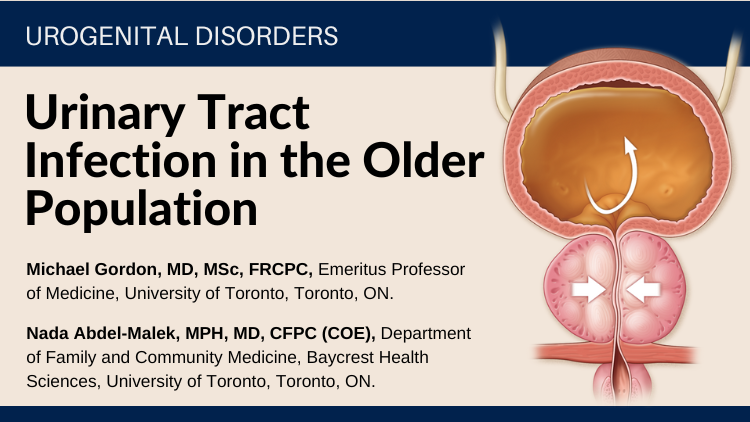Sophie Robichaud, MD, FRCP(C), Medical Microbiology and Pediatric Infectious Diseases, Royal University Hospital and Saskatoon Health Region, and Departments of Microbiology and Immunology and Pathology, University of Saskatchewan, Saskatoon, SK.
Joseph M. Blondeau, MSc, PhD, RSM(CCM), SM(AAM), SM(ASCP), FCCP, Head of Clinical Microbiology, Royal University Hospital and Saskatoon Health Region, and Adjunct Professor of Microbiology and Immunology, Clinical Assistant Professor of Pathology, Departments of Microbiology and Immunology and Pathology, University of Saskatchewan, Saskatoon, SK.
Urinary tract infections (UTIs) are the most common infectious problem among older adults both in the community and institutional settings. With the expected increase in this population, UTI-related costs--both human and financial--will rise in a parallel fashion. The diagnosis of symptomatic UTI among older adults is complicated by the high prevalence of asymptomatic bacteriuria, which does not require any treatment, and the difficulty in interpreting the signs and symptoms of UTI in a population in which significant comorbidities can undermine the communication between the patient and the medical team. Another important issue is the constant increase in antimicrobial resistance, especially in long-term care facilities, where antimicrobial use is greater than in the community. Newer agents are now available for the treatment of UTI among older adults, targeting both the usual and the multiresistant uropathogens. Rational use of antimicrobials in the treatment of UTI in the older adult is important to both provide appropriate care and control the spread of resistant organisms in this population.
Key words: urinary tract infection, older adults, UTI management, antimicrobials.

